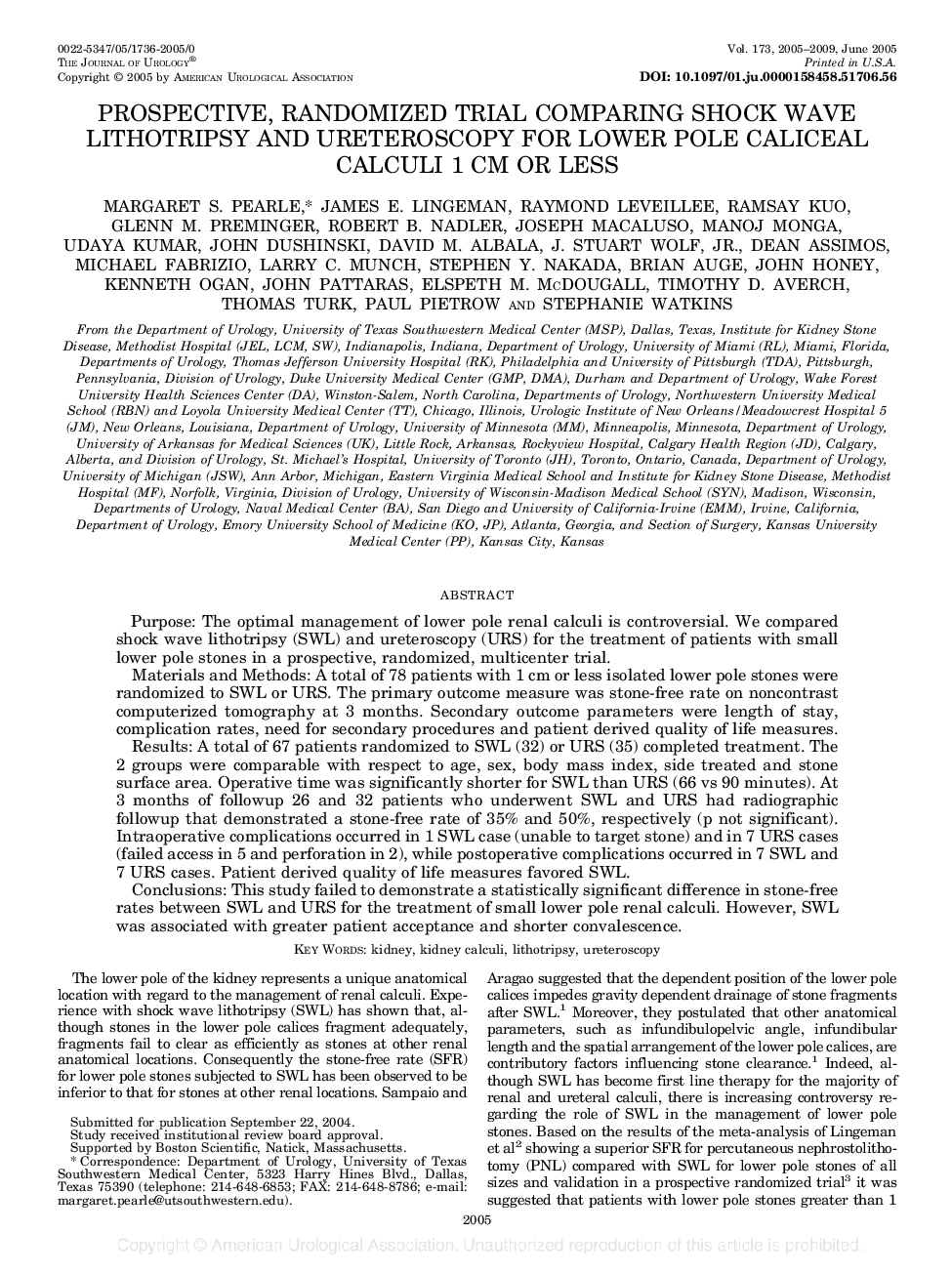| Article ID | Journal | Published Year | Pages | File Type |
|---|---|---|---|---|
| 3880734 | The Journal of Urology | 2009 | 5 Pages |
ABSTRACTPurpose:The optimal management of lower pole renal calculi is controversial. We compared shock wave lithotripsy (SWL) and ureteroscopy (URS) for the treatment of patients with small lower pole stones in a prospective, randomized, multicenter trial.Materials and Methods:A total of 78 patients with 1 cm or less isolated lower pole stones were randomized to SWL or URS. The primary outcome measure was stone-free rate on noncontrast computerized tomography at 3 months. Secondary outcome parameters were length of stay, complication rates, need for secondary procedures and patient derived quality of life measures.Results:A total of 67 patients randomized to SWL (32) or URS (35) completed treatment. The 2 groups were comparable with respect to age, sex, body mass index, side treated and stone surface area. Operative time was significantly shorter for SWL than URS (66 vs 90 minutes). At 3 months of followup 26 and 32 patients who underwent SWL and URS had radiographic followup that demonstrated a stone-free rate of 35% and 50%, respectively (p not significant). Intraoperative complications occurred in 1 SWL case (unable to target stone) and in 7 URS cases (failed access in 5 and perforation in 2), while postoperative complications occurred in 7 SWL and 7 URS cases. Patient derived quality of life measures favored SWL.Conclusions:This study failed to demonstrate a statistically significant difference in stone-free rates between SWL and URS for the treatment of small lower pole renal calculi. However, SWL was associated with greater patient acceptance and shorter convalescence.
